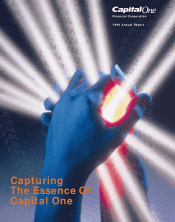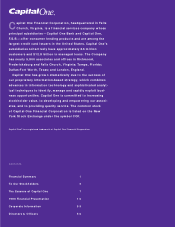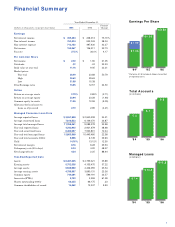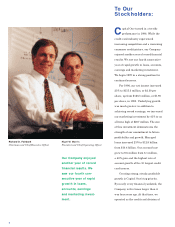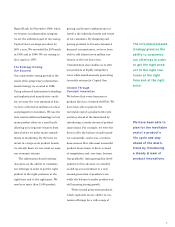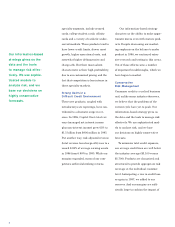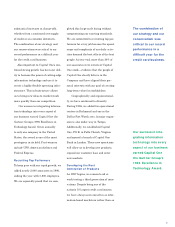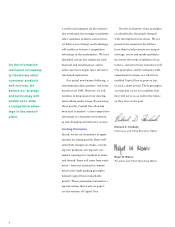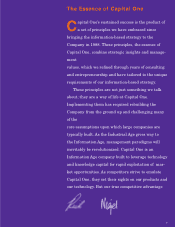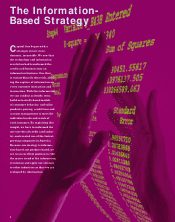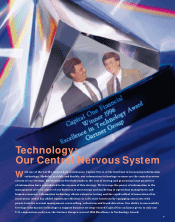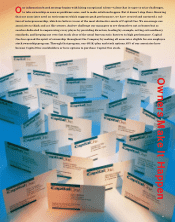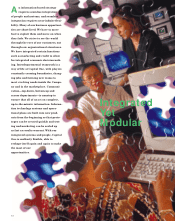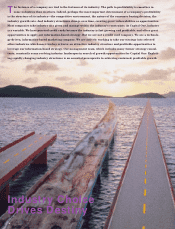Capital One 1996 Annual Report Download - page 6
Download and view the complete annual report
Please find page 6 of the 1996 Capital One annual report below. You can navigate through the pages in the report by either clicking on the pages listed below, or by using the keyword search tool below to find specific information within the annual report.4
specialty segments, include secured
cards, college student cards, affinity
cards and a variety of cards for under-
served markets. These products tend to
have lower credit limits, slower asset
growth, higher operational costs, and
somewhat higher delinquencies and
charge-offs. But their most salient
characteristic is their high profitability,
due to our customized pricing and the
fact that competition is less intense in
these specialty markets.
Strong Gains in a
Difficult Credit Environment
These new products, coupled with
introductory-rate repricings, have con-
tributed to a dramatic surge in rev-
enue. In 1996, Capital One’s total rev-
enue (managed net interest income
plus non-interest income) grew 63% to
$1.5 billion from $906 million in 1995.
Put another way, risk adjusted revenue
(total revenue less charge-offs) rose to a
record 8.02% of average earning assets
in 1996 from 6.99% in 1995. While our
margins expanded, many of our com-
petitors suffered shrinking returns.
Our information-based strategy
also gives us the ability to make oppor-
tunistic moves even with mature prod-
ucts. Despite decreasing our market-
ing emphasis on the balance transfer
product in 1996, we continued exten-
sive research and testing in this arena.
Out of these efforts came a number
of important breakthroughs, which we
have begun to market.
Conservative
Risk M anagement
Consumer credit is a cyclical business
and, unlike many industry observers,
we believe that the problems of the
current cycle have yet to peak. Our
information-based strategy gives us
the data and the tools to manage risk
effectively. We use sophisticated mod-
els to analyze risk, and we base
our decisions on highly conservative
forecasts.
To minimize total credit exposure,
our average credit lines are well below
the industry average ($3,100 versus
$5,700). Products are also priced and
structured to provide appropriate risk
coverage at the individual customer
level. Anticipating a rise in credit loss-
es again in 1997, we added to our
reserves. And our margins are suffi-
ciently large to cushion the impact of
Our information-based
strategy gives us the
data and the tools
to manage risk effec-
tively. We use sophis-
ticated models to
analyze risk, and we
base our decisions on
highly conservative
forecasts.

